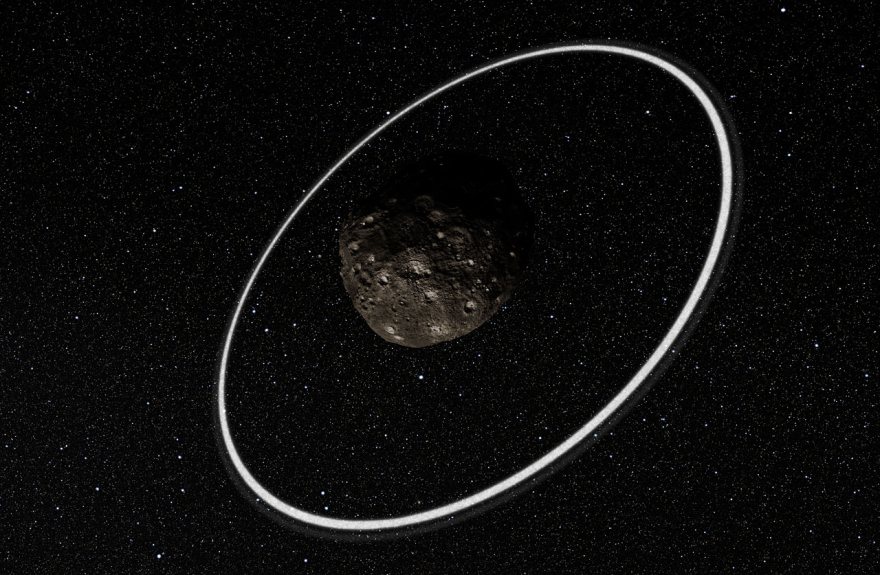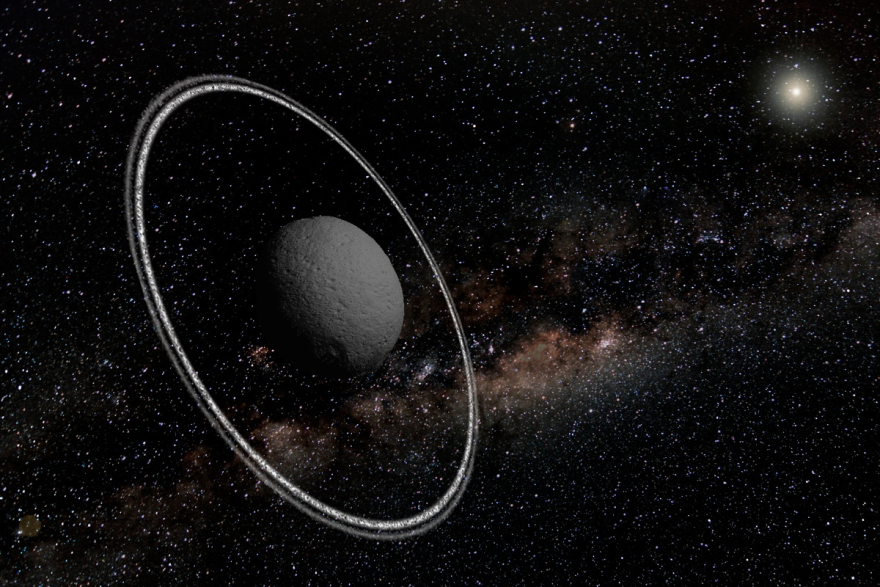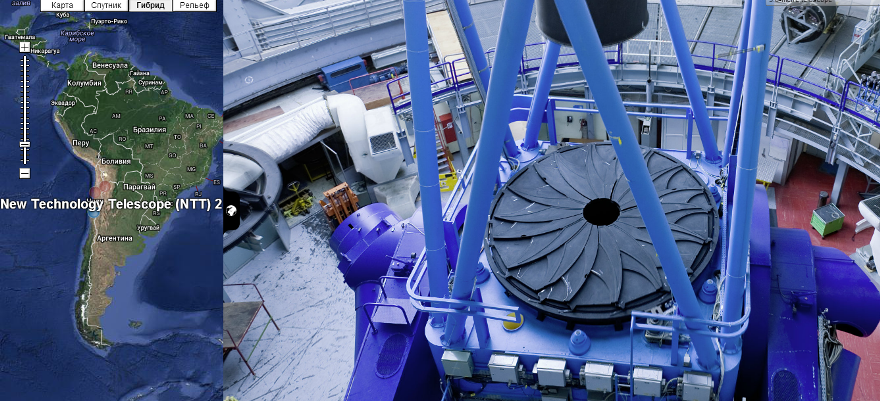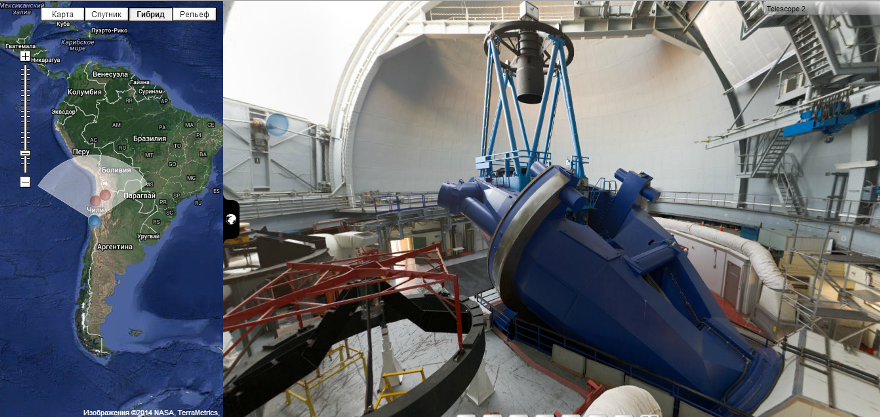First asteroid with rings discovered
Scientists have made a stunning discovery in the solar system - an asteroid with its own set of rings that revolves around the Sun between Saturn and Uranus. The asteroid is the first non-planetary object ever found that has its own ring system.

Filegiver continues a series of posts on space discoveries. This time we will talk about the asteroid Hariklo, which is surrounded by a pair of rings. According to a study published on March 26 in the journal Nature, rings most likely formed after a collision of scattered debris around an asteroid. The presence of asteroid rings also suggests an undetected asteroid satellite, which stabilizes them.
“We did not look for rings and did not even think that small bodies, like Hariklo, could possess them. Therefore, the discovery came as a complete surprise to us! ”Says Felipe Braga-Ribas, the head of the study, from the National Observatory in Brazil. An asteroid with a diameter of 250 km looks just tiny against the backdrop of giant gaseous planets that have rings. “This discovery proves that the formation of rings around a cosmic body has nothing to do with its size,” says Braga-Ribas.
On June 3, 2013, Braga Ribas led a team of astronomers observing the passage of Hariklo against a star, a process known as coating. When an asteroid flies against the background of a star, it blocks its light, which gives scientists the opportunity to study the asteroid in more detail. Astronomers were surprised to find that a few seconds before and after the main eclipse, the star’s light was interrupted, which suggested that the asteroid was surrounded by something. By comparing the data collected from seven different telescopes, the team was able to determine the shape, size and orientation of the rings. The system consists of a dense inner ring 7 km wide and an outer ring 3 km wide. “From the surface of the asteroid they look amazing, the bright rings at a distance from the surface are 1000 times smaller than the moon from the Earth,” says Braga-Ribas. The rings are similar to those that surround Saturn,

The speed of particles rotating around Hariklo is only a few tens of meters per second, which is relatively slow compared to tens of kilometers per second at the rings of Saturn. While Saturn is the most famous cosmic body with the presence of rings in the solar system, Jupiter, Neptune and Uranus also have them, just less noticeable. But all these gas giants are much larger than Hariklo.
Astronomers used seven telescopes, most of which were located in South America. Of these, only the telescope from La Silla (European Southern Observatory (ESO) in Chile) was able to detect a small gap between the rings. “This was made possible through the use of“ Lucky Imager, ”a fast and sensitive camera that generates a sequence of images at a speed of 10 frames per second,” said Braga-Ribas. A stellar eclipse simultaneously by two asteroid rings lasted 0.6 seconds, which allowed us to consider them in detail. The exposure time of other telescopes was a longer time, so they managed to take eclipse images with only one ring. The video below shows how the rings were detected.
Hariklo is one of the largest centaur asteroids. Centaurs - a group of asteroids located between the orbits of Jupiter and Neptune, transitional in properties between the asteroids of the main belt and objects of the Kuiper belt, in some properties similar to comets. Perhaps it is such a long distance from the Sun that will help to reveal the reason for the presence of rings in comparison with the asteroids that are near Mars and Jupiter, where the solar wind is stronger and probably carries away small particles.

The relatively small size of Hariklo forms a rather low level of gravity, which means that the asteroid was able to capture only small and slowly moving particles. The presence of a ring system answers questions about why the asteroid has become brighter since the last observations in 2008. Yet it remains a mystery how the rings remain stable. Over time, particles scatter from the rings in different directions, the only exception is when there is a satellite stabilizing the rings. But the mass of the satellite for Hariklo should be like both rings combined, and with such dimensions the satellite would easily move away from the asteroid due to the low gravity of the latter. Therefore, perhaps the ring system is young enough. But if there is still some kind of satellite of the asteroid that keeps the rings in a stable state,
Additional useful materials:
1. Video about Hariklo with comments in English from Space.com
2. About the asteroid Hariklo on Wikipedia .
3. Asteroids centaurs .
4. An interesting virtual tour of the observatory in Chile.
5. The recently discovered dwarf planet 2012 VP113 in the Oort cloud.
6. Infographics of the 36-year-old voyager probe 1 travel.
Here's what those same telescopes in Chile look like.





